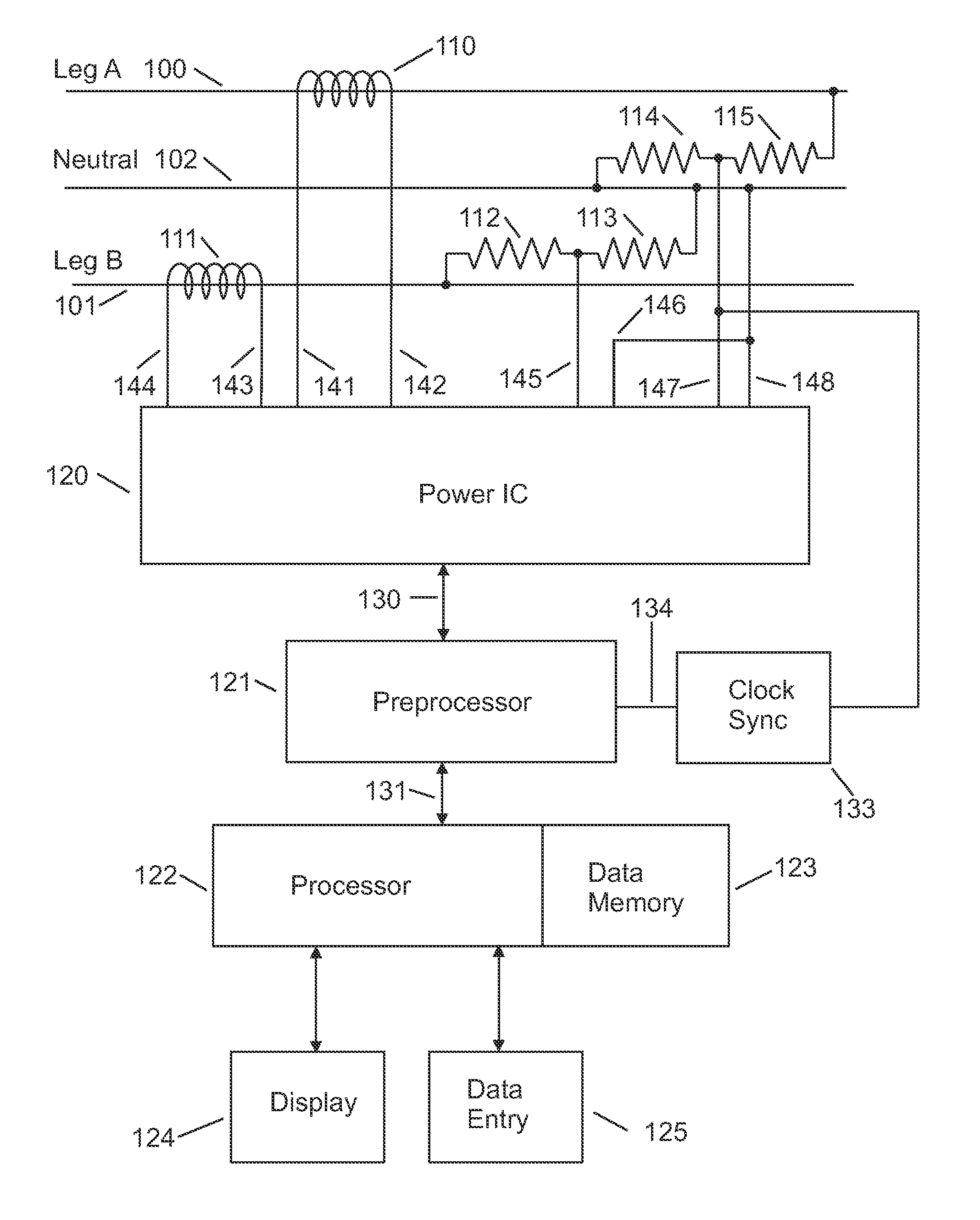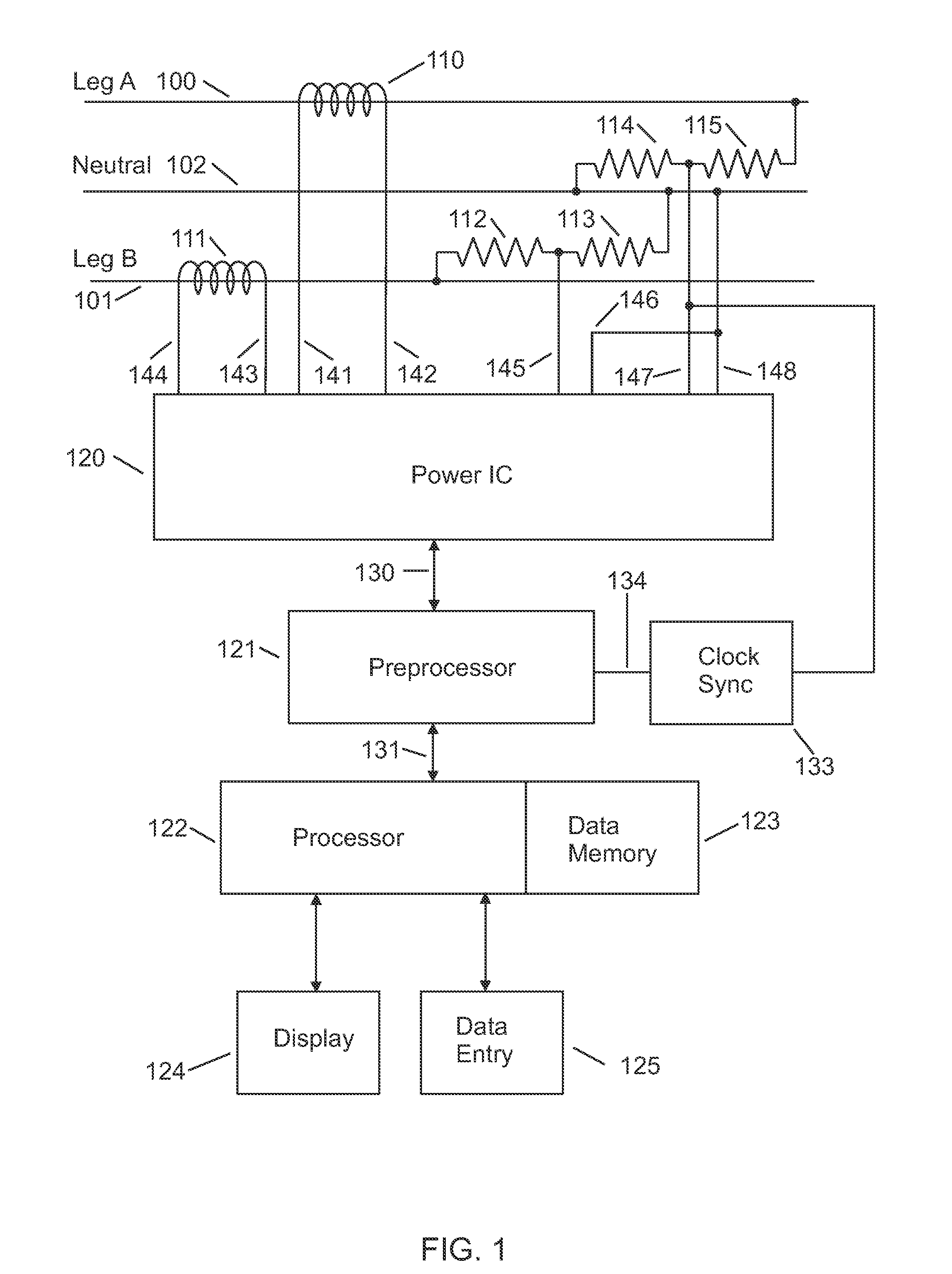Power Monitoring and Analysis System for Identifying and Tracking Individual Electrical Devices
a technology of power monitoring and analysis system, applied in the field of energy monitoring system, can solve the problems of additional power sensors, separate complex power monitors used for each electrical device, and the total power used by the device during a period of tim
- Summary
- Abstract
- Description
- Claims
- Application Information
AI Technical Summary
Benefits of technology
Problems solved by technology
Method used
Image
Examples
Embodiment Construction
[0043]A typical household has dozens of different electrical devices that consume electrical power. Households typically have single examples of appliances such as HVAC equipment, washer, dryer, refrigerator, stove, microwave, toaster, coffeemaker, etc. Each of these devices has specific electrical behaviors during a complete on-off cycle. It is very unlikely that the combination of these behaviors is identical for different devices. Even though the average continuous real power may be the nearly identical for some devices, differences in the electrical parameters during a complete on-off cycle will generally be sufficiently different to enable unique identification.
[0044]Multiple instances of the same device served by the same supply generally can not be uniquely identified. For example, all 60-watt incandescent light bulbs will be recognized as the same device. However, multiple instances of 60-watt lights can be tracked by keeping count as they are turned on and off. If two 60-wa...
PUM
 Login to View More
Login to View More Abstract
Description
Claims
Application Information
 Login to View More
Login to View More - R&D
- Intellectual Property
- Life Sciences
- Materials
- Tech Scout
- Unparalleled Data Quality
- Higher Quality Content
- 60% Fewer Hallucinations
Browse by: Latest US Patents, China's latest patents, Technical Efficacy Thesaurus, Application Domain, Technology Topic, Popular Technical Reports.
© 2025 PatSnap. All rights reserved.Legal|Privacy policy|Modern Slavery Act Transparency Statement|Sitemap|About US| Contact US: help@patsnap.com



